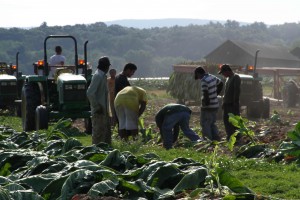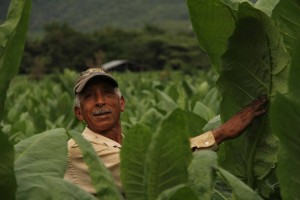Field of Gold: Grow as you Go
By: Chris Collins
Passion projects… they’re demanding, they don’t pay well, they go on forever, and they yield the greatest rewards a filmmaker can reap. Perhaps the most demanding type of passion project is the feature documentary. Mike Sullivan a.k.a. Sully and Hugh Lawson just began post-production on theirs entitled Field of Gold.
They literally did everything themselves as a two-man-band. They invested in a little bit of gear and built up their package like a snowball rolling down a mountain in a cartoon. They took corporate gigs and put that money toward gear. $15,000 later they have a solid 2 camera package and a feature’s length of footage from the United States and the Caribbean. It’s a perfect example of what can be accomplished with a little bit of money and a hell of a lot of hard work.
I had the chance to ask Sully some questions about the process. Here’s what he had to say…
Q: How did this whole project start and what is your role?
A: It is the first film from our production company, Cut And Dry Productions,
and has been a complete collaboration between myself and Hugh Lawson. Together, we share the
responsibilities of filming, producing, directing and editing throughout the
entire production.
Hugh and I met in college and started the company at the end of our
senior year. On the side we’ve worked on several commercials, web
videos, and industrials to fund the film.
Recently, we’ve welcomed Ryan Mackenzie to the team as our lead
producer for the film and we are excited for what he can bring to the table.
Q: What did the $15k go towards?
A: The majority of our expenses were equipment and travel cost. We knew
that the project was going to take well over year to film, and with very few
scheduled shoot dates. So during pre-production we knew we wanted to
invest in as much of our own equipment as possible. We ended up going with the 7D and 60D. This set up allowed us to be
extremely mobile and maintain a low profile when we were shooting in the
Caribbean, especially Cuba.
Q: Why tobacco farmers? What led you to this subject?
A: The premise of the film was conceived in the summer of 2009. I had
planed to pitch the film for my school’s BFA program, but decided to hold
off and wait until after I graduated. I approached Hugh with the idea at the
end of the school year and showed him some footage that I’d shot during
the previous summer with a professors Z7U. Hugh was immediately on
board.
At one point the premium tobacco industry was a critical part of the
infrastructure for many towns and communities within the Connecticut
River Valley. Unfortunately, due to large-scale land development,
a constantly rising overhead, and an ever-present tax burden, the
Connecticut River Valley premium tobacco industry is quickly disappearing
from our landscape.
It’s really important to stress that this film is not pro-tobacco. A
Field of Gold profiles a sub-culture and way of life that many people are
unaware of in the United States.
From the farmers and migrant help who work the fields of Connecticut and
the Caribbean, to the casual cigar smoker and connoisseurs on Madison
Avenue in New York City, A Field of Gold is about the culture of premium
cigars and the people who work in the industry. The goal of this film is to
tell the complete story of not just the nuts and bolts of an industry, but also
the passion and culture that’s goes hand in hand with the creation and
enjoyment of fine tobacco products.
The main character of A Field of Gold is an independent farmer named
Bob Hinckley, along with his wife Melisia, and their two sons Bob Jr. and
Corey. They’re a cohesive group that works hard to meet the challenges
and demands that a growing season in New England poses.
An important aspect of A Field of Gold is bringing awareness to a
disappearing industry. In the 1960s there were over 50,000 acres of
tobacco raised in the Connecticut River Valley, now its under 3,000 and is
less and less every year. Rampant over development, and ever increasing
Financial burdens (i.e. taxes, labor cost, high overhead) on this industry
are causing it to fade into extinction.
Q: What were a few of the more important things you learned?
A: Being a small-scale production we had to fill a lot of roles ourselves. My
background has been more as camera operator / Director of Photography.
And Hugh’s expertise lies in writing and editing…but we both we had to
share all of the responsibilities throughout the entire production. This is
what I love about this type of filmmaking… every day posed a different set of
challenges.
-
http://twitter.com/rescuethecows Loren
-
http://twitter.com/c2camera Chris Collins
-
ArthurC
-
http://profile.yahoo.com/T7HP7CKNRHVBS4KA2HYP6PUWSA RONALD






